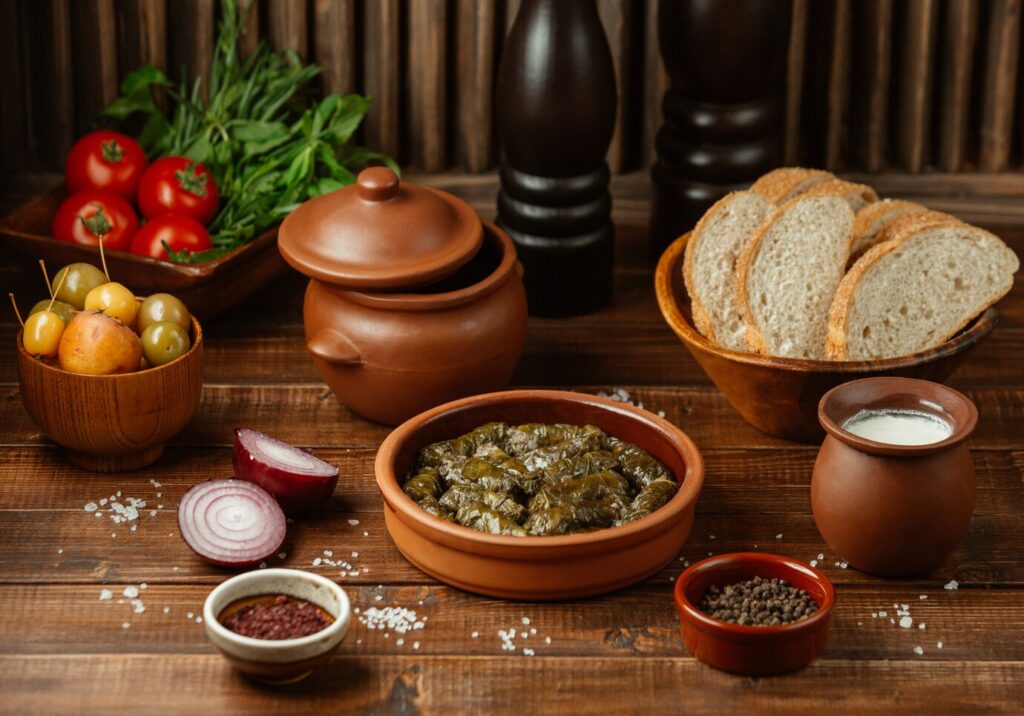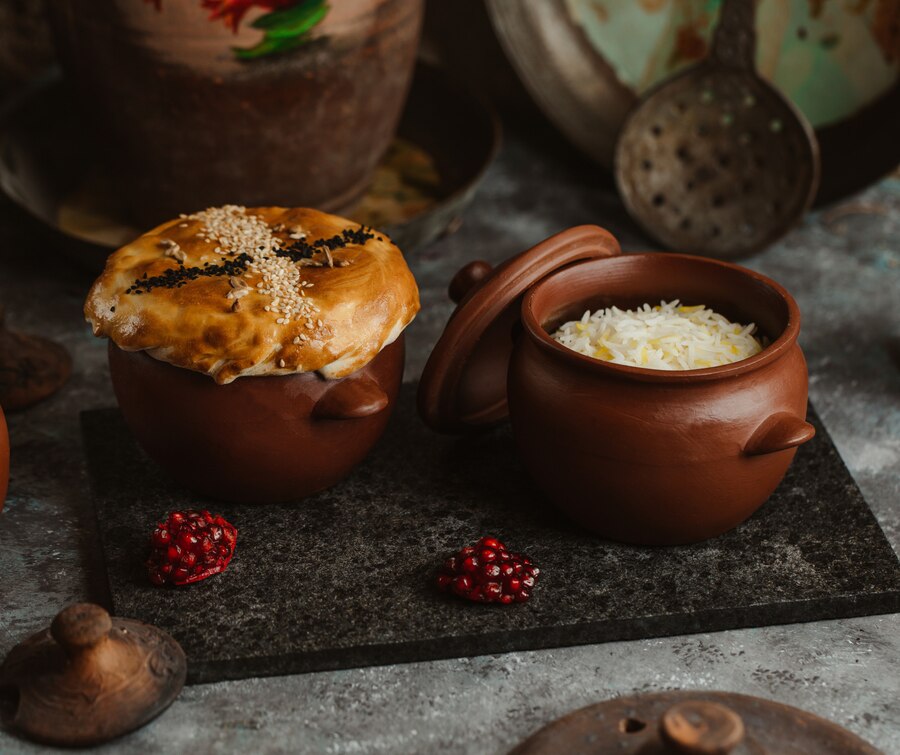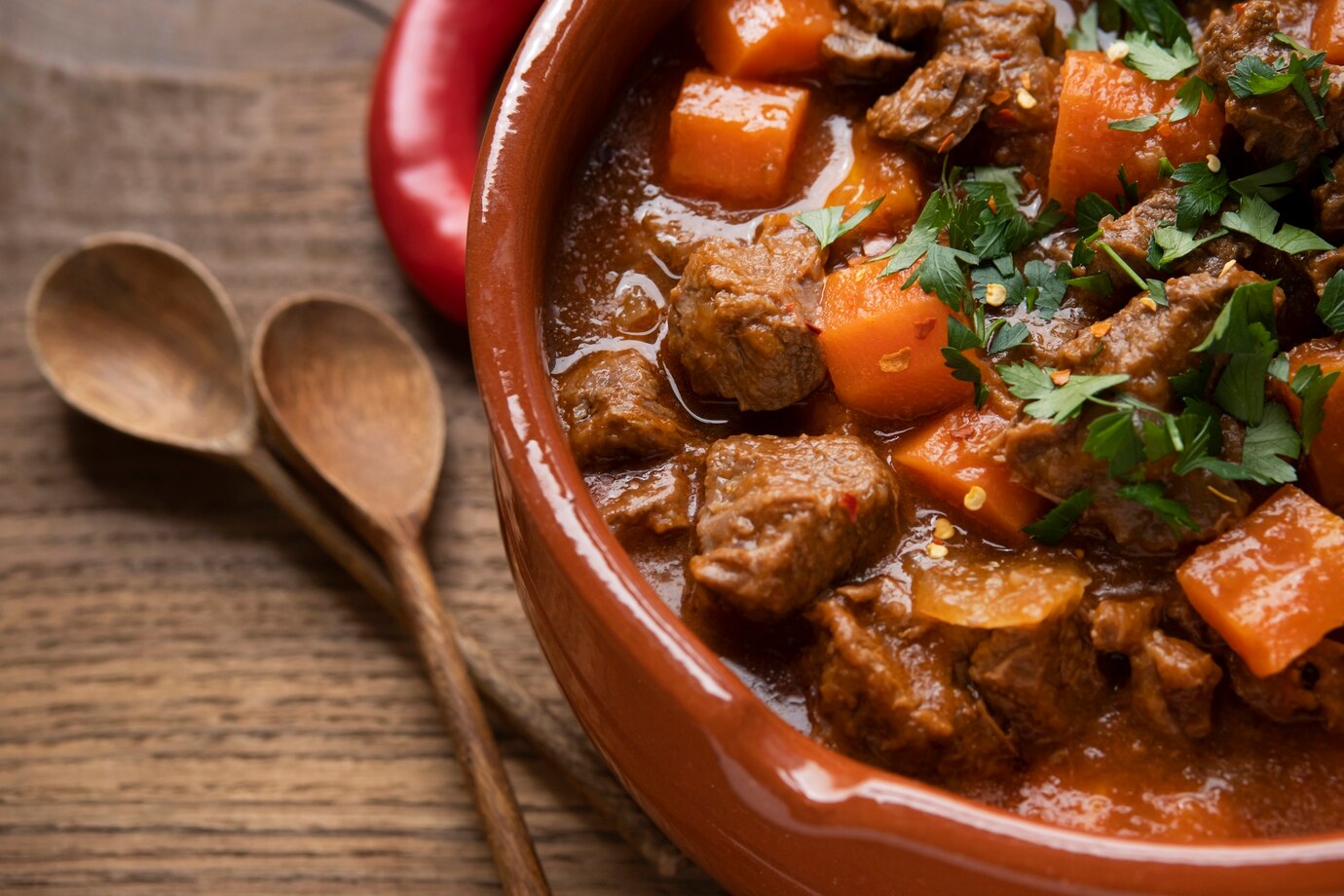The Food Blog

Mastering Clay Pot Cooking: A Tradition That Stands the Test of Time
Clay pot cooking has been around for centuries in kitchens around the world. It is prized for oiling flavours and holding spices. Moroccan tagine, Indian handi, and Spanish cazuela are clay pots that all cook food with slow cooking perfectly.
Cooking in clay pots is not only traditional. It gives food deep, earthy notes. You end up with tender textures that metal or non-stick cookware can’t replicate. There are health benefits of clay pots too. They keep moisture in and reduce the need for added fats or oils.
This guide will teach you how to master clay pot cooking. It will also include tips on seasoning, controlling temperature, and traditional techniques from different cultures.
Why Choose Clay Pot Cooking?
1. Superior Heat Retention and Even Cooking
Clay pots are culinary champions renowned for their heat-holding prowess. They let food simmer slowly and evenly, enhancing every flavour. Their porous structure holds heat like a warm hug. This helps to prevent hot spots and lowers the risk of overheating. Cook with confidence; clay pots deliver perfection with each meal.
2. Natural Flavour Enhancement
Cooking in clay pots enhances the natural flavours of ingredients. As the food simmers, it absorbs the earthy essence of the clay, resulting in more affluent, deeper-tasting dishes.
3. Moisture Retention
Clay pots retain moisture exceptionally well, making them ideal for slow-cooking meats, stews, and grains. The water the clay absorbs slowly releases as steam, keeping food juicy and tender.
4. Health Benefits
Discover the magic of clay pots crafted from pure, chemical-free materials. These pots are a healthier alternative to metal and non-stick cookware. Cooking with clay demands less oil, resulting in dishes that are lighter, healthier, and bursting with flavour. Embrace the art of wholesome cooking, where nutrition meets nature’s finest!
How to Choose the Right Clay Pot
1. Types of Clay Pots
Clay pots come in various shapes and sizes, each suited for different cooking methods.
- Unglazed Clay Pots: These pots are porous and breathable. They are great for slow-cooking stews, soups, and roasts. They allow the earthy flavour of the clay to infuse into the food.
- Glazed Clay Pots: Coated with a protective glaze, these pots are non-porous and easier to clean. They are perfect for baking and simmering dishes that require minimal evaporation.
- Tagines are Moroccan clay pots. They have a conical lid and are perfect for slow-cooking meat and vegetable stews.
- Romertopf Cookers are German clay pots with lids. They are great for baking bread and roasting meats.
- Indian Handi Pots: Traditional pots used for slow-cooking curries, rice, and dals.
2. Size and Shape
- Choose a deep, round pot for soups and stews to retain moisture.
- Opt for a wide, shallow clay dish for roasts and baked dishes.
- Select a size that comfortably fits the dish you are preparing without overcrowding.
Preparing and Seasoning Your Clay Pot
1. Soaking the Clay Pot
Before using a clay pot for the first time, it must be seasoned to prevent cracking and improve durability.
- Submerge the clay pot (both pot and lid) in water for 1–2 hours.
- This prevents the pot from drying out too quickly when exposed to heat.
2. Seasoning with Oil and Herbs
To enhance the flavour of future dishes, season the pot with oil and herbs.
- Rub the inside of the pot with olive oil or vegetable oil.
- Add aromatic herbs like rosemary, thyme, or bay leaves.
- Heat the pot slowly in the oven at 175°C (350°F) for 30–45 minutes.
- Let it cool completely before using.
Mastering Clay Pot Cooking Techniques
1. Slow Simmering
Clay pots are ideal for slow-simmering dishes, allowing flavours to develop gradually.
Best for:
- Soups and stews: Lentil soups, vegetable stews, and chowders.
- Curries and braised meats: Indian curries, Moroccan tagines, and beef short ribs.
Pro Tips:
- Cook over low to medium heat to avoid cracking the pot.
- Use a heat diffuser on gas stoves to prevent direct flame contact.
- Avoid adding cold liquids to a hot clay pot, as this can cause it to crack.
2. Baking in Clay Pots

Clay pots make a humid baking space. This keeps bread, casseroles, and roasts moist and tender.
Best for:
- Artisan bread: Produces a crusty exterior and airy crumb.
- Baked chicken or pork: Retains juices and stays succulent.
- Vegetable gratins: Ensures even cooking with a creamy consistency.
Pro Tips:
- Preheat the oven with the clay pot inside to prevent thermal shock.
- Brush the pot with oil or butter before baking to prevent sticking.
- Let the pot cool slightly before washing to prevent cracking.
3. Clay Pot Roasting
Clay pots are perfect for roasting, keeping meats juicy and tender. The moisture released by the clay prevents drying out, even with long cooking times.
Best for:
- Whole chicken or duck: Ensures a crispy skin with tender meat.
- Leg of lamb or pork loin: Retains moisture and flavour.
- Root vegetables: Caramelises without drying out.
Pro Tips:
- Place the clay pot in a cold oven and gradually increase the temperature.
- Add aromatic herbs and spices to the pot for enhanced flavour.
- Baste the meat occasionally with its own juices.
Regional Clay Pot Dishes to Try
1. Moroccan Tagine
A tagine is a North African dish made in a conical-lidded clay pot, slow-cooking meat with vegetables, dried fruits, and spices.
- Ingredients: Lamb, apricots, almonds, and ras el hanout.
- Cooking Tip: Simmer slowly over low heat for 2–3 hours for rich, tender flavours.
2. Indian Dum Biryani in a Handi
In India, dum biryani is traditionally cooked in a clay handi, sealing in the flavours with a dough crust.
- Ingredients: Basmati rice, marinated meat, saffron, and spices.
- Cooking Tip: Cook over low heat to allow the spices to fully infuse the rice.
3. Spanish Cazuela Stew

The cazuela is a round, shallow clay pot used in Spanish cuisine for making stews and casseroles.
- Ingredients: Chorizo, beans, tomatoes, and paprika.
- Cooking Tip: Let the stew simmer slowly to blend the flavours.
Tips for Clay Pot Maintenance
To keep your clay pot in top condition:
- Avoid sudden temperature changes: Gradual heating prevents cracking.
- Hand wash only: Use warm water and a gentle scrub brush. Avoid soap, as clay can absorb it.
- Air dry completely: Store the pot in a dry, ventilated area to prevent mould.
- Re-season occasionally: Season the pot with oil every few months to keep it in good condition.
Traditional Cooking
Clay pot cooking is a cherished tradition steeped in flavour and heritage. It infuses each dish with rich, authentic flavours and perfectly tender textures. From slow-cooked stews to freshly baked bread and succulent roasted meats, clay pots transform your meals into culinary treasures. Experience the magic as these humble vessels elevate your cooking game!
To master clay pot cooking, first choose the right pot. Then, season it well and cook with patience. Use traditional, slow-cooking methods to make your dishes special. Enjoy the rich, earthy flavours that clay cookware offers.









